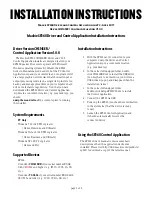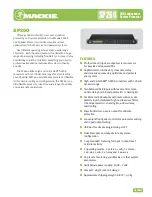
Chapter 2
Installation and Configuration
2-8
ni.com
, for pinout information.)
Setting this option to
Parallel Port
disables normal LPT1
functionality. The default is
Disabled
.
•
Legacy USB Support
—Use this setting to use a USB keyboard and
mouse as if they were standard PS/2-style peripherals. You
must
enable
this setting to use these devices in operating systems with no USB
support and to boot from a USB floppy or CD-ROM. The BIOS setup
screen always works with USB keyboards regardless of this setting.
Certain real-time applications may require you to disable this setting
to reduce loop time jitter. The default is
Enabled
.
PXI Setup Menu
Use this menu to control and route certain signals on the PXI backplane.
Normally, you do not need to modify these settings. However, other
sections of this manual may indicate that modifications are necessary
and may lead to unpredictable behavior.
•
INTP Routing
—You can route INTP to ISA IRQ 14, for use by a
PXI device functioning as a Primary IDE Controller. The default
setting is
Not Routed
.
•
INTS Routing
—You can route INTS to ISA IRQ 15, for use by a
PXI device functioning as a Secondary IDE Controller. You also can
route it to the controller’s 21-frame serialized IRQ input, for use by
certain PXI carrier cards. The default setting is
Not Routed
.
Note
If INTS or INTP is routed to an ISA IRQ, you
must
disable one or both channels of
the integrated IDE/ATA controller for correct operation of this routing.
LabVIEW RT Setup Menu
Note
This menu is visible only if the controller supports LabVIEW RT.
Use this menu to configure boot options for LabVIEW RT if it is installed
on the controller. If you are not using LabVIEW RT, you should leave these
settings as default.
Note
These settings override the behavior of the switches on SW1. Refer to the
section for more information. To use the settings from the
switches, select
Use Hardware Switch
for each option.















































